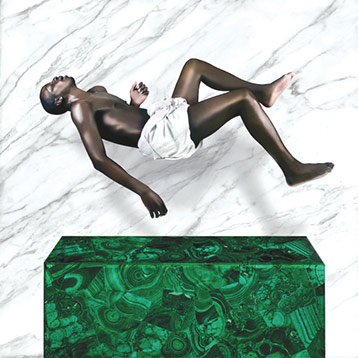Petite Noir: Creative or a carbon copy
 CREDIT: PETITE NOIR
CREDIT: PETITE NOIRPetite Noir's new album La Vie Est Belle is exactly the same as their EP King of Anxiety, with only a few songs differentiating themselves.
On Sept. 11, Petite Noir released his first full-length album, entitled La Vie Est Belle, which is the much anticipated follow up to his January extended play (EP) King of Anxiety.
It’s hard to pinpoint exactly where Petite Noir gets his inspiration and even trickier to place him in a specific genre. Due to his originality he’s created a whole new niche for himself and dubbed it noir wave.
La Vie Est Belle comes across with atmospheric synth lines, captivating, upbeat drum rhythms and chill guitar riffs, but perhaps it’s a little too similar to the King of Anxiety EP. The difficulty with proclaiming your own genre is that it can be tricky to retain that sense of originality while still being innovative.
The songs on this record that do bring a nice sense of innovation are unfortunately few and far between.
The song “Best” is second on the album and has a powerful hook in it unlike anything Petite Noir has done before. The mellow synths that usually populate the songs give way to energetic guitars that follow crashing drum rhythms through an unabashed chorus.
If more of the album contained this sense of energy, perhaps it would have been more of a successful release, though it seems to be a downhill trend from the beginning.
Perhaps the best part of Petite Noir’s initial release was his impeccable vocal range, which reached a high alto in “Shadows” and stooped to a silky low baritone in “Chess”, which incidentally reappears as the final track on La Vie Est Belle.
It would have been nice to see “Shadows” reappear as well because most of the latest album resides in this low end of his range, making for a much blander vocal performance.
The one thing that Petite Noir did manage to nail on this album was his knack for plagiarism. In his song “MDR” he blatantly rips off “You’re The One That I Want” by Olivia Newton-John, even going as far as to find a female vocalist to sing the famed lines from its chorus. The only thing this song is missing is the catchy “oo-oo-oo honey”, but don’t worry because Petite Noir leaves a nice pause in the vocals if you’d like to sing that for yourself.
The only track on this album that comes close to eclipsing “Chess” is the song “Seventeen (Stay)”. The hook in this song adopts a positive vibe with a powerful vocal delivery that punches through the instrumentation elegantly. The hook is catchy in comparison to the rest of the album, but that might just be a result of this small amount of uniqueness buried in the monotonous recreation of his first EP.
I say that “Seventeen (Stay)” only comes close to “Chess” because of the second half of the song. At the four-minute mark it makes a hard left into a weird and barren space that seems immensely detached with the rest of the song. On its own, this second portion would serve as a brilliant interlude or conclusion track, but it seems incredibly forced and very much like an afterthought. The bare bones production of this second part creates an earnest and vulnerable vocal bit, which might be the realest part of this album, but as it stands “Seventeen (Stay)” is a missed opportunity.
In fact, the entirety of La Vie Est Belle seems like a missed opportunity. Petite Noir had a chance to experiment and create a new work of art that could stand on its own, but instead shied away and tried to emulate what worked for him the first time around.
Perhaps the next album will see some form of creativity back into the mix, but until then I wouldn’t spend any money on Petite Noir.
Rating: 2 out of 5














